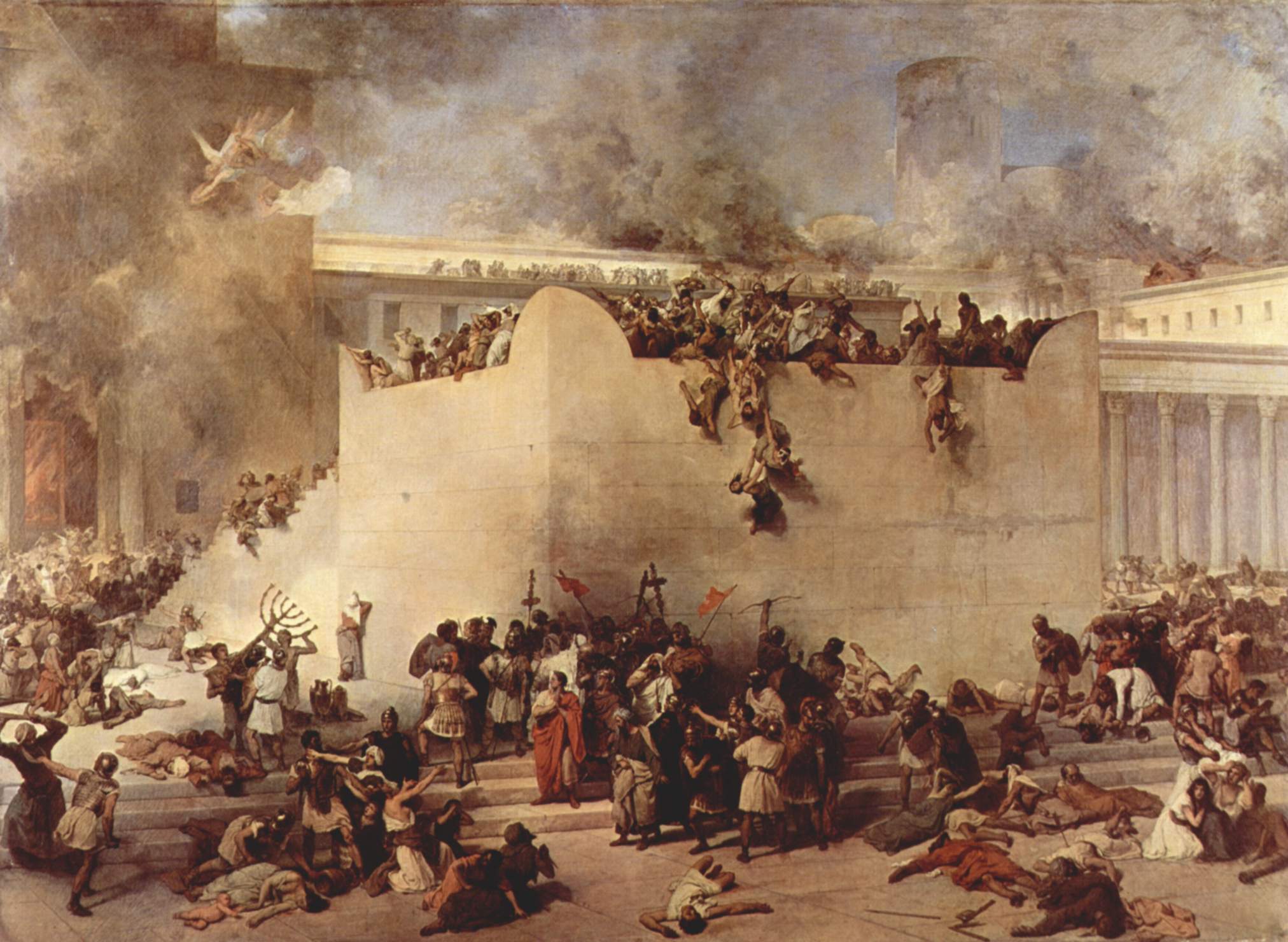
Q: In this Sunday’s Gospel, Jesus appears to be talking about the end of the world. Is he?
A: There is a real connection with what Jesus is saying here in Mark 13, and with the Book of Revelation, which we are studying on Thursdays here at St Justin’s – you’re welcome to join us! Jesus’ “eschatological discourse” on the end of the universe indeed has reference to the end of history, and the renewal of the space-time universe in which we live. But its most immediate meaning refers to the destruction of Jerusalem and its temple in the year 70 AD.
Remember, Jesus says “Amen, I say to you, this generation will not pass away
until all these things have taken place.” How long is a generation? 40 years. Let’s do some quick math: Jesus’ death and Resurrection took place in approximately 30 AD. Jerusalem and its temple were destroyed exactly 40 years later, in 70 AD. So, Jesus’ solemn prophecy came true. Should anyone be surprised?
Q: What does the destruction of Jerusalem’s temple have to do with the end of the universe?
A: To the Jews, the temple was a miniature model of the universe, and the universe was to them, as it were, a gigantic temple. The temple curtain separating the Holy Place from the Most Holy Place had images of the stars, the moon, and the planets. Thus, when it fell, it was like Jesus predicted: “the moon will not give its light, and the stars will be falling from the sky”.
God’s judgment fell on the wicked temple establishment in 70 AD because of its rejection of the Messiah, as well as because of its avaricious, self-serving leadership. This was indeed the point of last Sunday’s Gospel reading from Mark 12 (the widow’s offering). Almost every preacher uses that text as an example of trust in God and sacrificial giving on the poor widow’s part – and that is undoubtedly a good application of the text.
But, read in context, it is a living parable of what Jesus had just explained about the religious leaders of his day. Jesus had said: “Beware of the scribes, who like to go about in long robes, and to have salutations in the market places and the best seats in the synagogues and the places of honor at feasts, who devour widows’ houses and for a pretense make long prayers. They will receive the greater condemnation.” And he sat down opposite the treasury, and watched the multitude putting money into the treasury. Many rich people put in large sums. And a poor widow came, and put in two copper coins, which make a penny. And he called his disciples to him, and said to them, “Truly, I say to you, this poor widow has put in more than all those who are contributing to the treasury. For they all contributed out of their abundance; but she out of her poverty has put in everything she had, her whole living.” (Mark 12:38-44).
The religious leaders of Jerusalem were supposed to be caring for widows and orphans. Instead, they were “devouring widows’ houses”. And here we have a widow whose house is indeed “devoured”. The two small copper coins she had put into the offering represented, in a sense, her last meal – they were just enough money to buy flour to make one small loaf or cake. In a sense, this woman’s plight was a living illustration of what Jesus had been complaining about.
The ill-treatment of those who were to be cared for and the rejection of Jesus as Messiah were characteristic of an evil temple leadership whose hearts had been closed to God and others. This is why Jesus wept over the city of Jerusalem: he foresaw its destruction because many would fail to repent. May our own hearts learn the lesson well.

